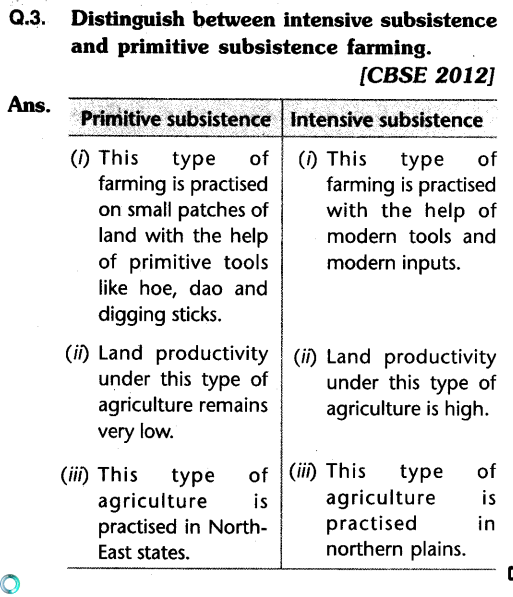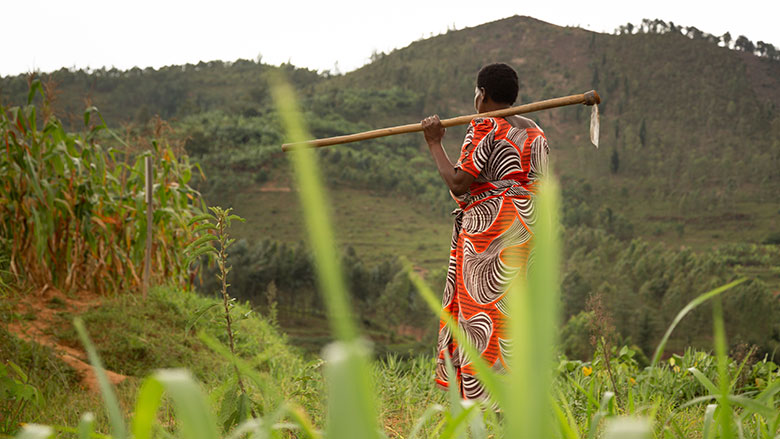Neighborhood Strength and Its Connection to Commercial Farming vs Subsistence Farming
Wiki Article
Taking A Look At the Technological Advancements Transforming Precision Farming Today
As the farming industry grapples with the obstacles of feeding a growing populace and making sure sustainability, technological technologies are reshaping the landscape of precision farming. The complete influence of these technologies on typical farming practices and their lasting sustainability remains a topic ripe for expedition.Drones in Agriculture

Drones facilitate exact surveillance of large farming areas, recognizing areas needing attention, such as insect invasions or nutrient shortages. This targeted approach permits the maximized application of plant foods, chemicals, and water, minimizing waste and environmental effect. Additionally, drones significantly reduce the moment and labor generally required for field assessments, raising efficiency and reducing operational expenses.
Beyond data collection, drones are critical in accuracy planting and crop splashing, ensuring uniform circulation and reducing ground disruption. The assimilation of drones into farming exemplifies a change towards data-driven farming practices, where technology not just increases traditional methods yet additionally introduces cutting-edge options for future difficulties. As the farming industry faces pressures from environment adjustment and population growth, drones provide an encouraging opportunity for sustainable augmentation and resource conservation.
Satellite Images Breakthroughs
While drones have substantially improved precision farming through aerial information collection, satellite images remains to play a crucial function in widening the range and scale of agricultural tracking. Satellite technology offers vast protection, making it possible for farmers to gain access to important understandings over extensive locations, which is not viable with drone innovation alone. This is especially useful for large-scale farms that call for extensive, consistent data.Breakthroughs in satellite images have actually brought around significant improvements in resolution and regularity of data capture. Modern satellites can now provide imagery with resolutions as fine as 30 centimeters per pixel, permitting for comprehensive analysis of crop wellness, dirt conditions, and irrigation patterns. In addition, the regularity of satellite passes has increased, guaranteeing that farmers can receive current info regularly. This prompt data is critical for making notified, real-time choices to optimize crop returns and source usage.
Moreover, the assimilation of hyperspectral and multispectral images has improved the data quality, making it possible for the accurate recognition of plant types, development phases, and stress and anxiety variables. With artificial intelligence algorithms, farmers can analyze satellite data better, projecting crop efficiency and potential concerns with unmatched accuracy. These innovations are pivotal in improving lasting farming methods worldwide.
IoT in Farming
The introduction of the Internet of Points (IoT) in farming represents a standard shift in agricultural management practices, supplying unequaled connection and data-driven insights. As IoT gadgets multiply across farmland, they supply real-time tracking and control over numerous agricultural procedures. These wise gadgets, that include soil sensors, weather condition stations, and livestock radar, gather and transfer data to main systems, making it possible for farmers to make educated choices and maximize source use.IoT technology assists in accuracy farming by improving the precision of information accumulated from the area. Soil wetness sensors can spot variants in dampness levels, allowing for specific irrigation scheduling, which saves water and advertises much healthier plant development. Likewise, environment sensing units offer important details on temperature level and moisture, helping in bug and condition management through prompt interventions.
In addition, IoT-enabled equipment, such as autonomous tractors and drones, further streamline procedures by automating labor-intensive tasks and minimizing human mistake. These innovations not just increase performance yet likewise add to sustainability by reducing inputs like water, fertilizers, and pesticides. As IoT remains to progress, its integration right into farming methods will likely grow, driving efficiency and sustainability in the farming field.
AI-Driven Analytics
Structure upon the robust data collection abilities of IoT, artificial knowledge (AI) arises as an effective tool in transforming raw data right into workable understandings for accuracy farming. AI-driven analytics leverages maker knowing formulas to evaluate large datasets accumulated from satellites, drones, and sensors.
Moreover, AI-driven analytics support accuracy farming by using customized recommendations for planting timetables and irrigation management. These insights aid maximize water usage, lining up with sustainability goals. By providing real-time insights and strategic support, AI-driven analytics not only improve functional performance yet additionally contribute in the direction of lasting farming techniques, protecting food supply chains for the future.
Robotics and Automation
In the world of precision farming, robotics and automation are transforming agricultural methods by offering extraordinary efficiency and accuracy. These machines are furnished with my review here general practitioners and sensors technology, allowing them to run with high accuracy and adjust to varying area conditions.Moreover, robotic systems enhance plant surveillance and monitoring. Drones outfitted with imaging modern technology can survey big locations quickly, supplying real-time data on plant health and dirt conditions.
The integration of robotics and automation in precision farming also resolves sustainability issues (commercial farming vs subsistence farming). By enhancing inputs and making the most of outputs, these technologies assist decrease environmental influence. Robotics and automation not just transform agricultural productivity but additionally contribute substantially to sustainable farming practices.
Verdict
Technological advancements are fundamentally reshaping precision farming by incorporating innovative devices like drones, satellite images, IoT tools, AI-driven analytics, and robotics. These innovations collectively investigate this site improve agricultural productivity, maximize resource usage, and advertise sustainable methods. Drones and satellite imagery provide crucial real-time information for crop health evaluation, while IoT devices and AI provide accurate management of resources such as water and nutrients. Robotics even more enhance operations, causing set you back reductions and boosted performance, eventually transforming standard farming methods.Reinventing the agricultural landscape, drones have arised as a investigate this site pivotal device in accuracy farming.IoT modern technology helps with accuracy farming by enhancing the precision of information collected from the area.Building upon the robust data collection capacities of IoT, man-made knowledge (AI) emerges as a powerful tool in transforming raw data into workable understandings for precision farming.In the realm of accuracy farming, robotics and automation are transforming agricultural practices by supplying extraordinary performance and precision.Technological innovations are essentially improving precision farming by integrating innovative tools like drones, satellite imagery, IoT gadgets, AI-driven analytics, and robotics.
Report this wiki page